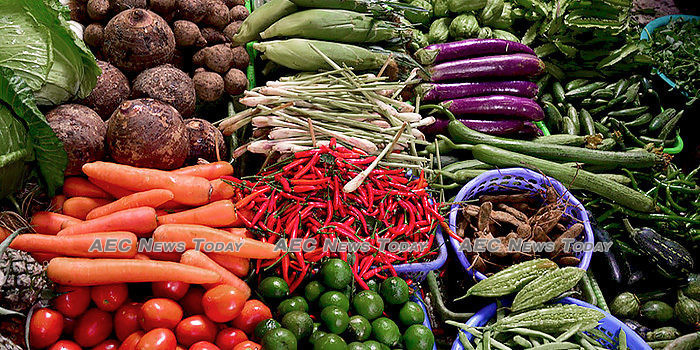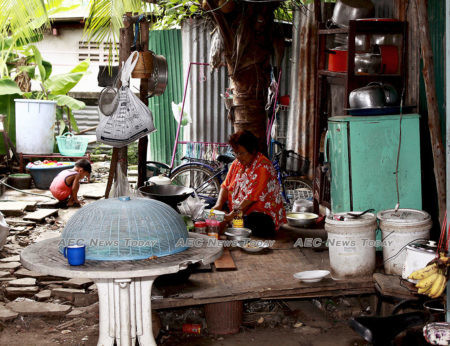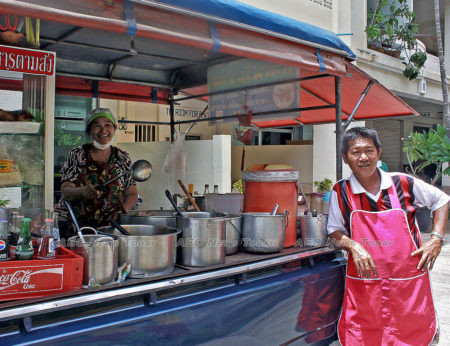
The impacts of the COVID-19 pandemic on food and nutrition throughout the region mean urgent planning and action is needed to avoid higher food prices, decreased nutrition, and reduced food security.
COVID-19 has captured the full attention of governments across the world. Their immediate focus has been on strategies to manage both the pandemic from a public health perspective and the economic and financial fallout through varying economic rescue packages.
While understandably these are key priorities, people living in the locked-down cities of Asia and the Pacific are worrying about fresh food markets that are closed, dwindling stocks in supermarkets, and broken supply chains for produce, while food is held up on the wharves.
For some, it’s getting harder every day to get food.
Massive food insecurity risks
Governments, NGOs, and concerned parties need to start thinking now about the possible impacts of the current crisis on food and nutrition security and what options exist to minimize food and nutrition security risks.
Reduced working hours or unemployment will cut incomes for tens of millions of workers throughout the region. This reality is already well underway. For many, household income could easily fall to levels that cause severe financial hardship, and both the quantity and quality of the weekly food basket will deteriorate.
 For families who live paycheck to paycheck, their resilience to reduced incomes is often limited, and the impact of reduced income will be rapid and potentially severe. While efforts are underway to hand out basic food, it may not cover the nutrition needs of populations and definitely not those of children and pregnant women. Low nutrition food, even when consumed for just for a couple of months, has long-term impacts on children’s brain development and overall health. Although businesses working in the essential services area, including food imports, deliveries and sales, are typically open for business, functionality is low as staff are unable to come to work, or are caught up in 14-day self-isolation. Clearing food imports at the ports has slowed down due to a shortage of workers, with the entire food processing sector likely to suffer from worker shortages, at least in the coming three to four months.For families who live paycheck to paycheck, their resilience to reduced incomes is often limited, and the impact of reduced income will be rapid and potentially severe.
For families who live paycheck to paycheck, their resilience to reduced incomes is often limited, and the impact of reduced income will be rapid and potentially severe. While efforts are underway to hand out basic food, it may not cover the nutrition needs of populations and definitely not those of children and pregnant women. Low nutrition food, even when consumed for just for a couple of months, has long-term impacts on children’s brain development and overall health. Although businesses working in the essential services area, including food imports, deliveries and sales, are typically open for business, functionality is low as staff are unable to come to work, or are caught up in 14-day self-isolation. Clearing food imports at the ports has slowed down due to a shortage of workers, with the entire food processing sector likely to suffer from worker shortages, at least in the coming three to four months.For families who live paycheck to paycheck, their resilience to reduced incomes is often limited, and the impact of reduced income will be rapid and potentially severe.
While efforts are underway to hand out basic food, it may not cover the nutrition needs of populations and definitely not those of children and pregnant women.
Low nutrition food, even when consumed for just for a couple of months, has long-term impacts on children’s brain development and overall health.
Although businesses working in the essential services area, including food imports, deliveries, and sales, are typically open for business, functionality is low as staff are unable to come to work, or are caught up in 14-day self-isolation.
Clearing food imports at the ports has slowed down due to a shortage of workers, with the entire food processing sector likely to suffer from worker shortages, at least in the coming three to four months.
As a result, supply chains are functioning at reduced capacity, causing supply-side stresses.
Price rises as supply chains stressed
As food consumption is relatively constant, buffer stocks currently allow supplies to be maintained, however, supply-side shortages can easily flow through to price rises.
In some countries prices in distant provinces have already been observed, and there is evidence that fruit and vegetable farmers using e-commerce platforms are already demanding higher prices.
Lower-income households disproportionately feel the impact of reduced financial resources and the effect of increased food prices. The flow-on effects of poor food and nutrition security at the household level in varying contexts are well-documented and have impacts far beyond health and nutrition.
While countries are varied in their safety net mitigation mechanisms, fundamentally well-targeted assistance is required, whether through direct household cash transfers, food banks, food stamps, or other similar means.
Timeliness is especially critical and governments need to develop and implement responsive policies and programs without hesitation.
In response to the food price hikes of 2010/2011 many governments designed programs that were implemented to address the stresses at the time. New programs should consider the lessons learned from that period and be targeted for effectiveness, within the constraints of a supply chain operating in a partial lockdown situation.
Looking 3- 6 months ahead
Looking forward three to six months and the real concern is the impact of COVID-19 on food production and supply.
We know in many countries there are farm labor shortages as workers can’t travel to farms, are quarantined, ill, or caring for ill family members.
This will affect the timeliness of farm production and the ability to complete various farm operations.
Fertilizer shortages are also being reported as supply chains in the production and transport phases are disrupted. This will translate to a reduction in crop yields.
While some countries have implemented, or are considering implementing, a ban on rice exports as in 2010/2011, this could cause alarm that protectionism has not been abandoned. Rice export bans in 2011 were a key reason behind rice price hikes at that time.
Food production policies need priority
While the level of public and private sector buffer stocks helds varies country-to-country, a slowdown in the supply chain from upstream of the farm gate, at the producer level, and post farm through processor to the fresh market or supermarket is currently underway, reducing stocks. Processed food items, with more complex supply chains, have a greater risk of shortages.
 Low income earners are most at risk of food and nutrition security risk from rising prices John Le FevreIt will be critical that governments prioritize policies and investments in the food production value chain to reduce the level of COVID-19 impact on the supply chain and to control food price rises. Local food systems will have enhanced importance, while the focus should be on staple food products, and fruit and vegetables.
Low income earners are most at risk of food and nutrition security risk from rising prices John Le FevreIt will be critical that governments prioritize policies and investments in the food production value chain to reduce the level of COVID-19 impact on the supply chain and to control food price rises. Local food systems will have enhanced importance, while the focus should be on staple food products, and fruit and vegetables.
To ensure domestic food supplies governments can take a range of short-term actions, including maintaining open borders and the regular revision of more targeted local lockdown policies to keep transport links open and food processors working.
Short term output-based stimulus payments can act as an incentive for farmers, including bonus payments per tonne, delivered, or matching grant program for rapid adoption of proven and simple on-farm drying and storage technologies to reduce losses.
Mobile markets and food delivery
With the closure of markets food delivery services and mobile food, vans will be important. This can be brought into operation by the hundreds of stallholders from the now-defunct markets.
 With support mobile food carts and markets can be implemented by those from shut-down markets (File) John Le FevreIn the medium-term investments need to be made in upgrading wholesale markets with proper cold storage facilities, which has been neglected for many years in some countries.
With support mobile food carts and markets can be implemented by those from shut-down markets (File) John Le FevreIn the medium-term investments need to be made in upgrading wholesale markets with proper cold storage facilities, which has been neglected for many years in some countries.
The immediate impacts of COVID-19 on food and nutrition security are just beginning to emerge and many additional tensions will arise in the coming weeks, months, and even years.
While the focus of most governments is presently on health, financial and economic impacts, planning is required today to avoid higher food prices, impact on populations’ nutrition status, and reduced food security.
Reducing shocks in the food supply chain will help contain food price rises and will be a lower-cost solution than managing food shortages, higher prices, and the risk of social instability. The time to act is now, not later.